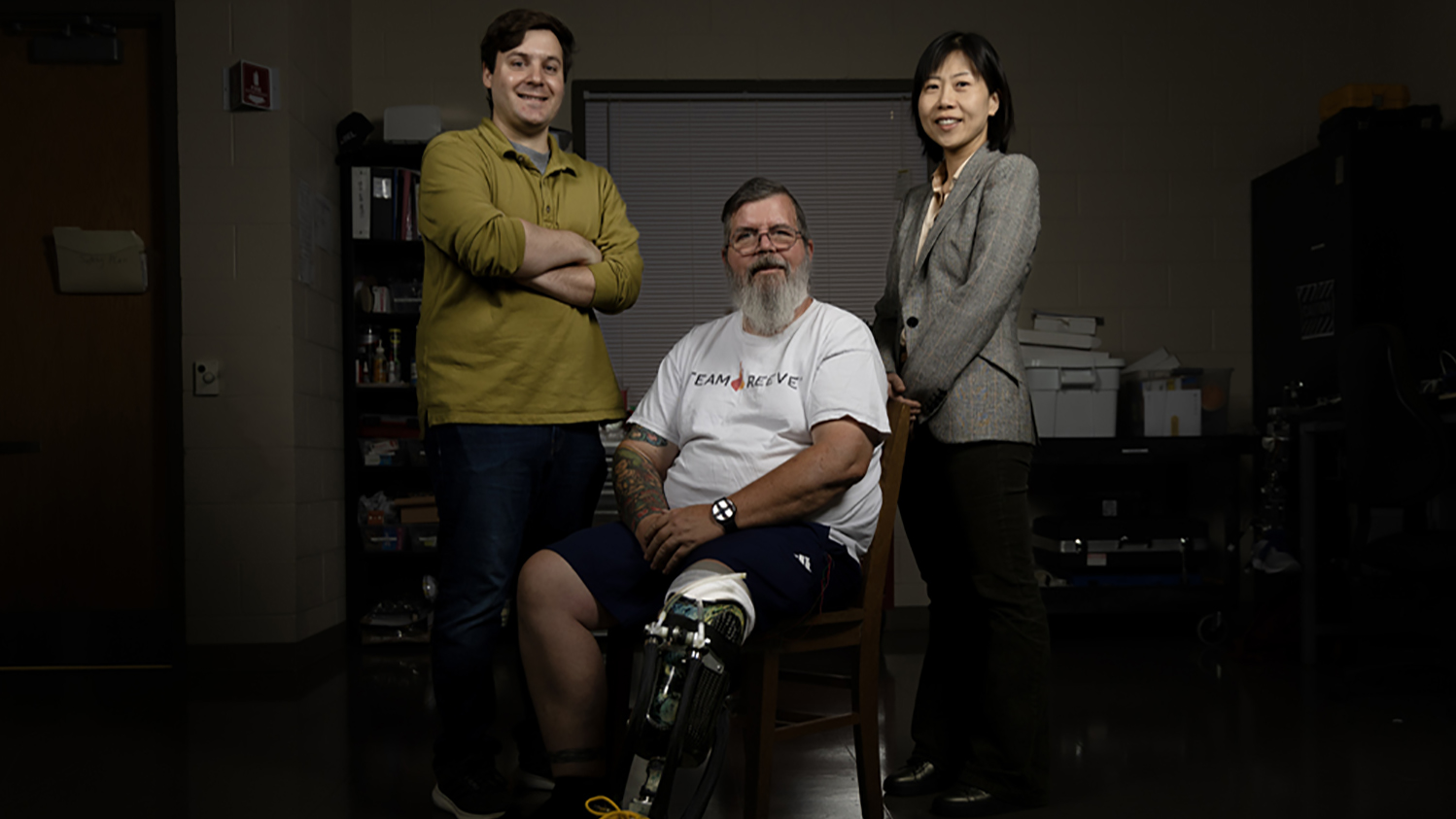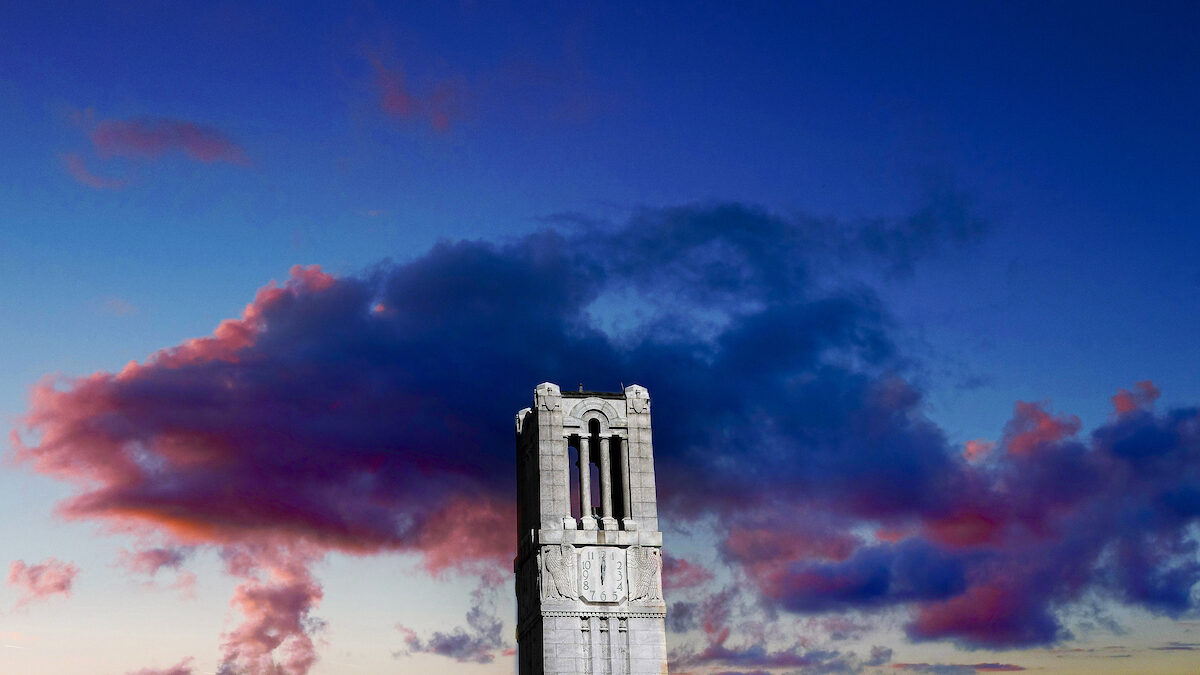Sculpting and scanning
A collaboration between Blake Kennedy of the Clay Studio and Jacob Jones of the Material Science and Engineering Department for an Envisioning Research contest is a further example of the connections between STEM and the arts at NC State.
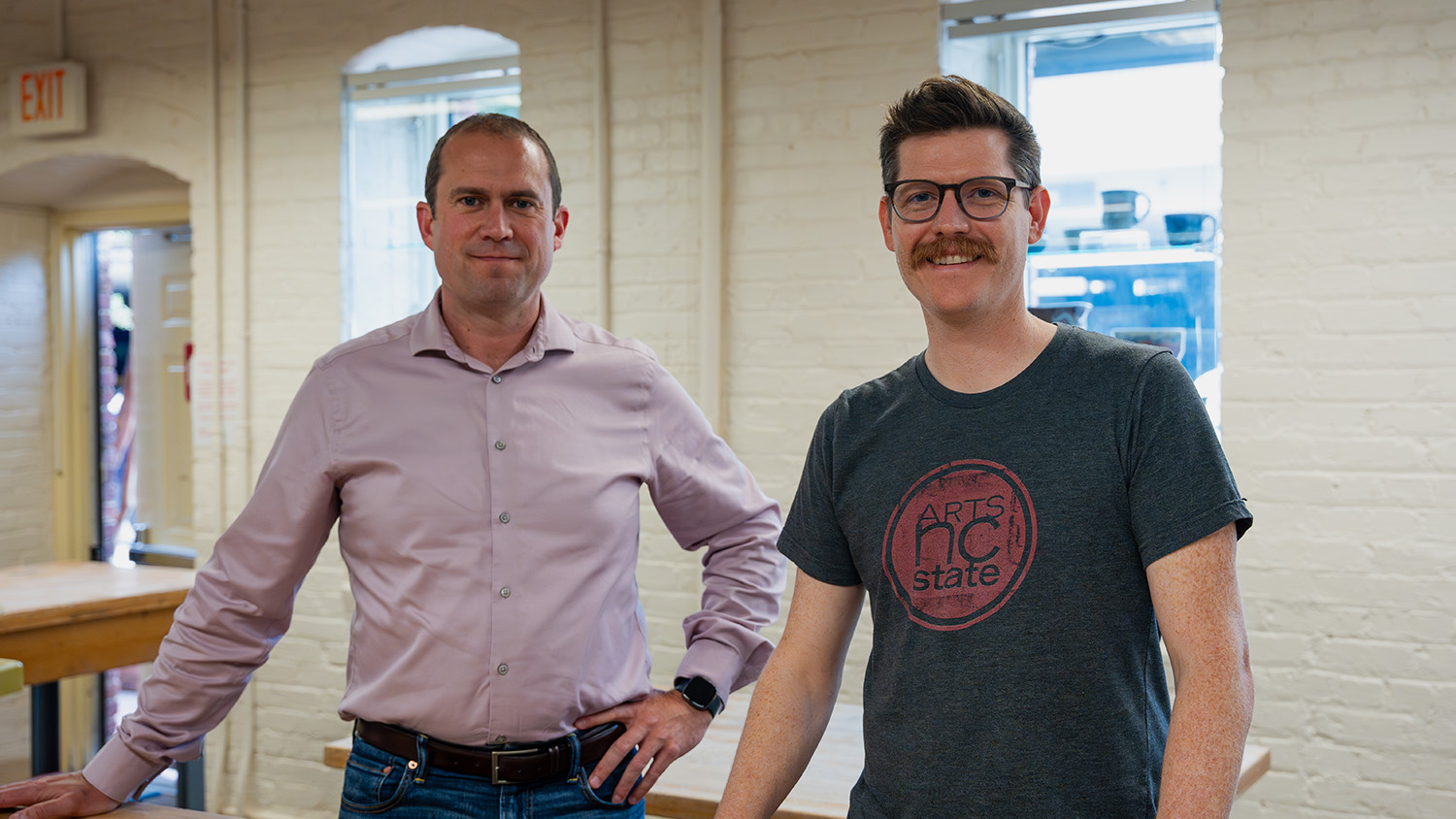
Throughout most of his 20-plus years working with ceramic processing, Jacob Jones, a Kobe Steel Distinguished Professor in the Material Science and Engineering Department and the director of the Science and Technologies for Phosphorus Sustainability (STEPS) Center, never seriously explored the possibilities of his work connecting with, and gaining mutual enhancement from, the arts community.
I think it was a highlight of the semester.” – Jacob Jones
That changed dramatically last fall. Jones was teaching a new course about ceramic processing and brought his class to the NC State Crafts Center’s Clay Studio. There, the class observed Clay Studio Manager Blake Kennedy introducing ceramic arts and using the studio’s gas kiln. Afterward, they engaged in a discussion about the intersection of art and science.
“I think it was a highlight of the semester,” Jones said. “Studying some concept theoretically in the classroom is different from seeing applications in real life. They had a tour of my ceramic engineering labs earlier in the semester. They understood some aspects of high-temperature furnaces and the processing of engineered ceramics. But being able to connect that with something they’ve been familiar with for a very long time was very useful.”

Jones explained that ceramics are a very common insulating material in many products and, because they can store charges, are often used for capacitors in electronics and microelectronics.
His group synthesizes various compositions of these capacitors and ceramic components, measures their properties, and determines their atomic structure.
“They’re using many of the same materials that we are, but for different research and applications. In the Clay Studio, many of those materials are in the clay we use and are also key components in the glazes we mix,” Kennedy said.
That meeting led to conversations between Kennedy and Jones about different research contests they could collaborate on.
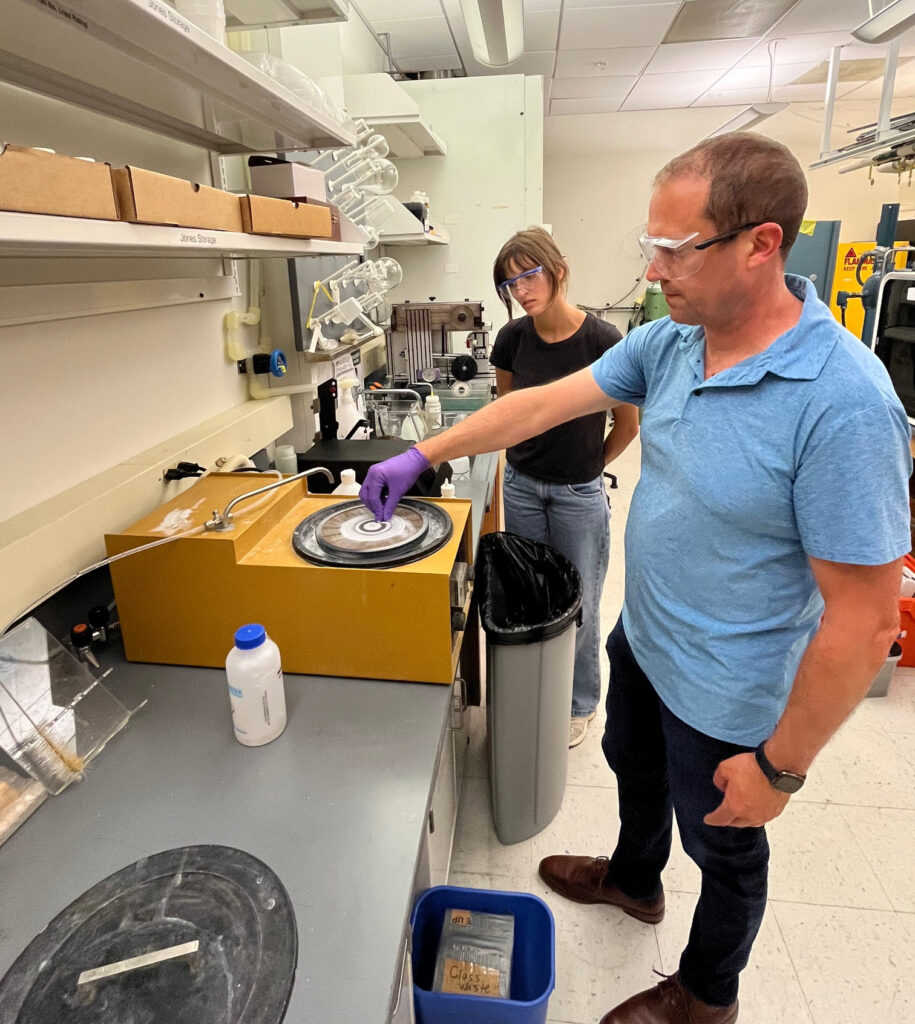
Jones eventually sent Kennedy information about NC State’s Envisioning Research contest, which allows graduate students, undergraduate students, postdocs, faculty and staff to “highlight the beauty and importance of the work being done at the bench and in the field, both on campus and around the world.”
The duo decided to use their combined materials and equipment to create landscape images of clay samples. Kennedy fired these samples in the clay studio and then brought them to Jones in the material science department, where he used a scanning electron microscope to create detailed landscape images of the samples, seen below:

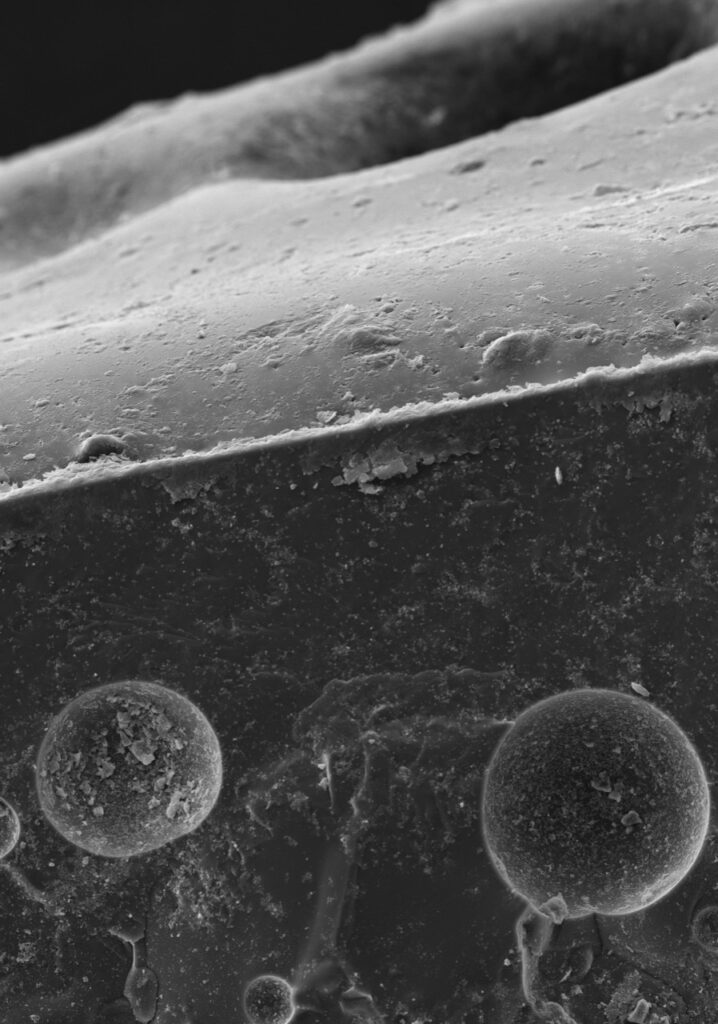
“To me, it’s super interesting,” Kennedy said. “It is incredible to be able to see the inside of the material that I’ve been using for the better part of 20 years. To see it on that microscopic level is definitely making me think about the material and my relationship to it in a new way.
“I’m particularly interested in different landscapes and more specifically where two different types of landscapes or geographic features meet, for example, where the sound or ocean meets the shore, that transition point where one feature stops and another begins has been a constant source of curiosity and inspiration. So from an artistic point of view , I am really interested in these types of images.”
Jones said that this project is a perfect example of the principles of the concept of STEAM, which brings science, technology, engineering, art and mathematics together.
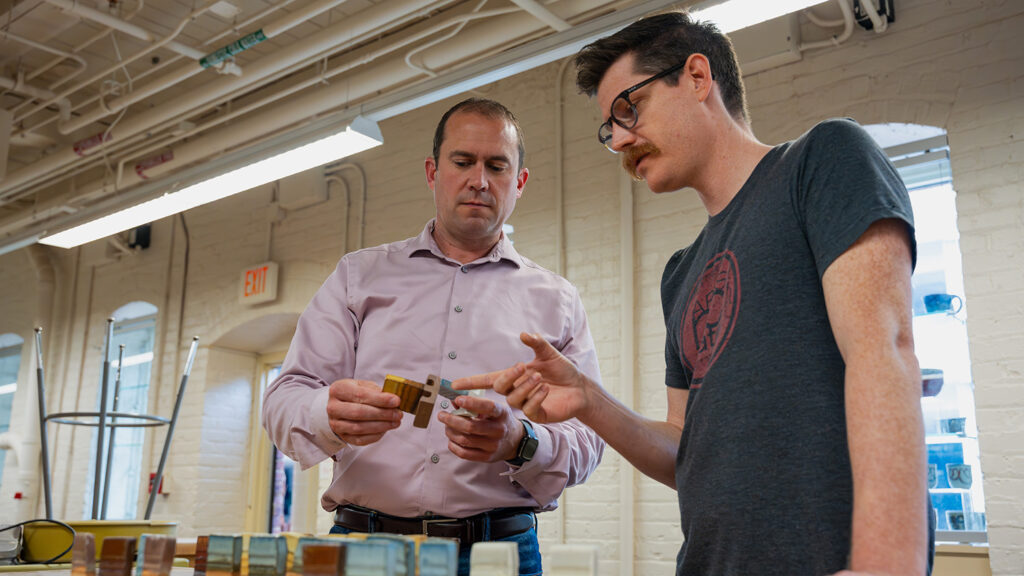
In the upcoming fall semester, Jones plans to take his ceramic processing course to the clay studio for an activity with an engineering spin, and he’s excited to continue exploring the intersection of STEM and the arts.
“For me, it’s new,” Jones said. “I would say there are engineering applications that can be percolated into the arts, and I think there are art opportunities that can be percolated into the sciences and engineering. Our submission to the envisioning research contest is an example of the former. We use advanced tools to prepare samples for imaging, use advanced electron microscopes to image samples, and we then create something we think is artistic.”
These two paths, art and science, are so intertwined and interconnected that it’s a real missed opportunity when you don’t highlight that.” – Blake Kennedy
Kennedy has long been passionate about that intersection, and he expressed his gratitude for the opportunity to explore it further through this collaboration with Jones and the Material Science and Engineering Department.
“In all reality, these two paths, art and science, are so intertwined and interconnected that it’s a real missed opportunity when you don’t highlight that,” Kennedy said. “So many times, I have people in class say ‘I’m not artistic, I’m a biology major or engineering major.’ Everybody is creative and artistic in some way. You have to be creative to conduct scientific research and continually reevaluate, reassess, fail and try again. The creative process and the scientific method are so similar, we just use different terminology to discuss them.”
This post was originally published in DASA.
- Categories:

